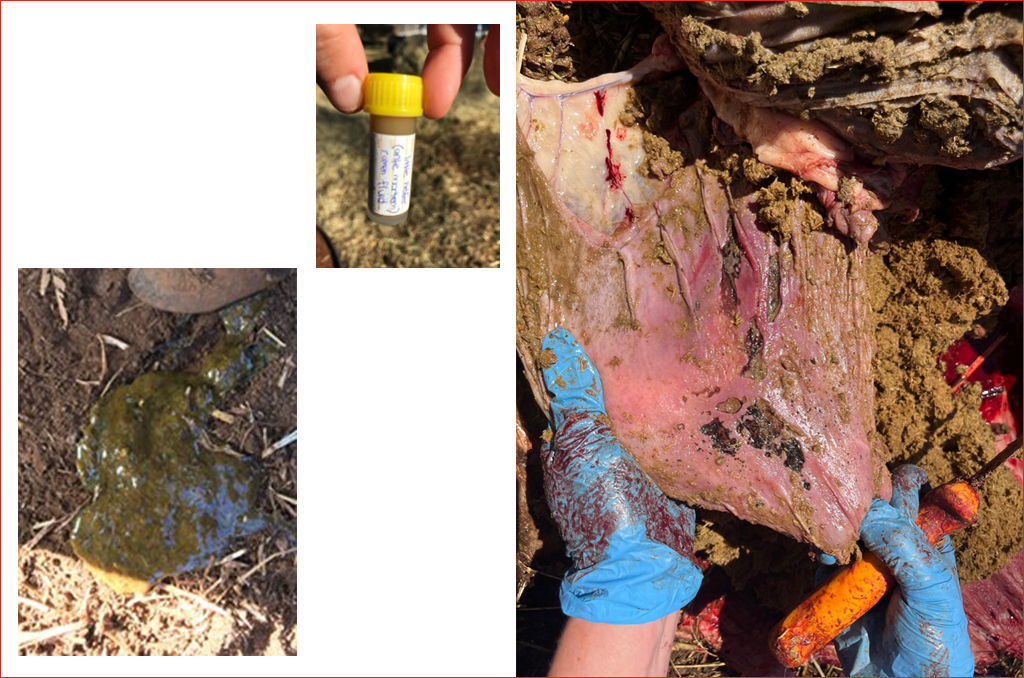Weaners die from ruminal acidosis
Unusual presentation:
Rapid deterioration and death of 20 freshly weaned cattle from a mob of 400 within one week.

Above: Acidotic rumen fluid and severely ulceration and sloughing of abomasum.

Above: Timeline showing feeding regime, deaths and veterinary investigation.
Time and location: September 2023, Far North Queensland.
Case definition: Freshly weaned cattle that deteriorate rapidly after showing signs of dehydration and being ‘tucked up’. Most affected animals become ataxic in the hindlimbs before being found dead.
Disease mapping: Brahman weaners less than 8 months of age were weaned from their mothers and placed in yards as two separate groups – small and big – with mortalities only occurring in the ‘big’ group. Copious amounts of liquid faeces was visible in the pen ranging from dark green to milky grey in colour and almost all contained pieces of corn. There were 10 feed troughs visible in the pens, 4 hay feeders and one water trough. All weaners had received nil vaccinations in their lives.
Gross findings: Two heifers were selected for clinical assessment, humane slaughter and full post-mortem examination. Both were dehydrated, had elevated heart rates and temperatures, weak or absent rumen contractions, and acidotic rumen pH. A small area of myocardial necrosis was found on one heifer, and omasitis and ulceration of the abomasum in the other. There were no other abnormal findings in lung, liver, spleen, lymph nodes, skeletal muscle, intestine or brain.
The differential diagnoses were ruminal acidosis (grain overload), monensin toxicity, botulism, sulphur toxicity, and polioencephalomalacia (PEM).
Laboratory findings: ELISA test of rumen contents for Botulinum toxin type C-D was negative, as was faecal culture for Salmonella spp.
Animal / management / environment risk factors: See recommendations.
Recommendations: To avoid engorgement and acidosis:
- Don’t feed grains to hungry animals.
- Feed freshly weaned animals in smaller groups to avoid some animals overeating. Often in weaned animals there are dominant animals and submissive animals meaning that not all animals are eating their allocated amount.
- Ensure that there is adequate roughage available to enable cud chewing. Pieces of roughage should be between 5-10cm in length to stimulated adequate cud chewing and salvia production. If paddock roughage is short and low in foliage, then hay must be always provided.
- A transition diet onto concentrates is recommended for a minimum of 3 weeks. Methods of adapting animals to a grain diet include using a low grain inclusion introductory diet, and once cattle have achieved stable feed intakes without showing signs of acidosis, increasing the grain inclusion by 5-10%.
